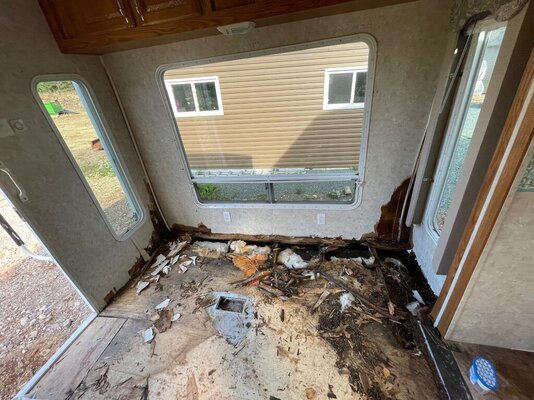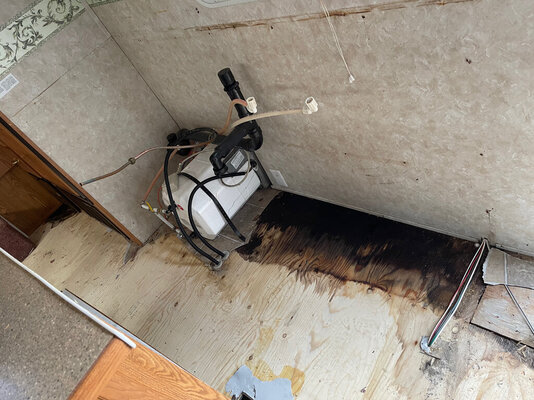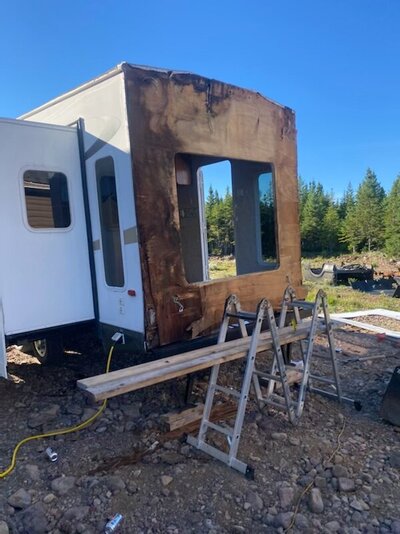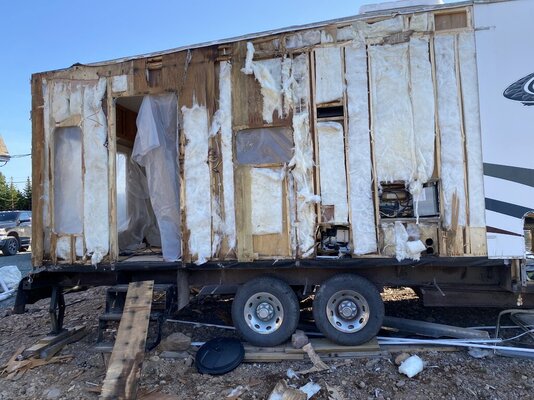Hi,
I just bought a camper (2005 Cherokee) that has some very severe rot along the edges of the back and side. The wood supports along the edge of the unit are completely gone, turned basically to powder, and the walls are sinking down from lack of support. Some of the walls are also rotted near the floor especially in the back corners where it looks like the water wicked up. Up above that area the walls don't seem affected. My main concern is, where did this water come from? The polyethylene seems to be completely intact on the bottom. The roof appears to be solid when walking on it. At first I thought maybe it was issues with the back window, but now I see it's all along the other wall too. Anyone with experience with this issue, who can tell me what to look for?
I just bought a camper (2005 Cherokee) that has some very severe rot along the edges of the back and side. The wood supports along the edge of the unit are completely gone, turned basically to powder, and the walls are sinking down from lack of support. Some of the walls are also rotted near the floor especially in the back corners where it looks like the water wicked up. Up above that area the walls don't seem affected. My main concern is, where did this water come from? The polyethylene seems to be completely intact on the bottom. The roof appears to be solid when walking on it. At first I thought maybe it was issues with the back window, but now I see it's all along the other wall too. Anyone with experience with this issue, who can tell me what to look for?




